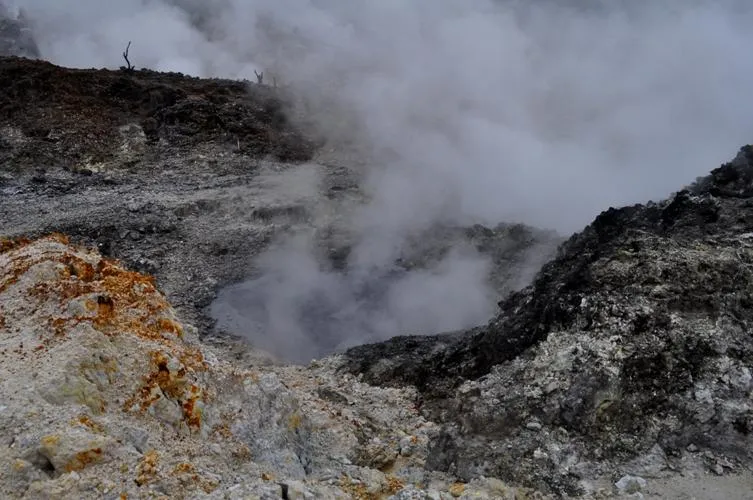
Mount Salak does save a lot of beauty. Many others dub it as a mystical mountain. However, Mount Salak is an icon of Bogor pride. The mountain with dense forest vegetation has many springs, so it is no wonder if there is a lot of waterfall on the slope. There is another unique of Mount Salak. The crater is not located at the top like most other mountains, but is in the middle of the mountain. This crater is known as the Crater of the Queen.
As Bogor residents, it seems incomplete if you have not been to the crater. Not long ago (22/07/2018), the intention to visit the Ratu Crater also. One of Kompasianer Bogor Akang Sepuh, who is accustomed to here, offers to climb to the crater. Sayapun invite Ria Astuti and 2 other friends (Beautiful and Mathias) to join, be the five of us trekking to kawah queen.
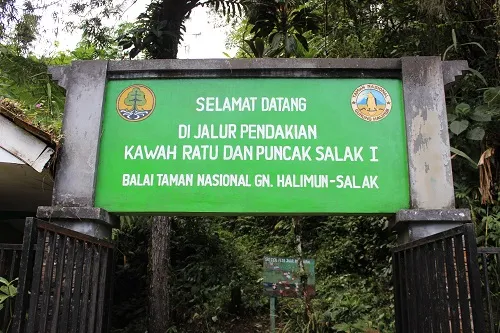
We started the journey as early as possible. At around 8 o'clock we arrived at the guard post to Ratu Crater on Mount Bunder (still including the Halimun-Salak Mountain National Park area). There are 2 official climbing routes that can be passed through Cidahu (Sukabumi) and we will pass this is Pasir reungit (Gunung Bunder). Before climbing, the park officer informed that climbing to Kawah Ratu should be accompanied by experienced guides. We also say yes, to avoid the things that are not desirable like lost, inhaled poison gas and so forth. However the roads to the mountains should not be underestimated even though the path is fairly easy.
To get to the crater of the queen through the reungite sand path, we have to trekking as far as 3.6 km. The distance so far it can be taken about 2 hours more. Not too difficult koq, because the road is quite sloping. Moreover Kawah Ratu only located at an altitude of 800-900 m above sea level, not too high. Seems good for a relaxed sport.
The morning was cloudy until it was not hot at all. Especially on the right and left there are many plants that sometimes force us to slightly droop while passing. The guide walked rather quickly in front of our party. With a machete in his hand, he occasionally cuts down the bushes / branches of a tree that stand in our way. The path we passed was very quiet, sometimes narrow, perhaps somewhat rarely passed by people. We only passed several times with other climbers from the opposite direction.
Along the way, we had to pass the path, between the rock and the muddy ground. Not infrequently also have to pass a river or water way. Hmm .. line to the crater of this queen is a wet track, just suegeer really deh. The sound of the rushing water of the river is almost always heard accompanying footsteps. Because of the many waterways that must be passed, it is not advisable to come here during the rainy season, because it is feared to be dragged by the current. Often the path we crossed was branched off, without any direction. And maybe this is why many people get lost here.
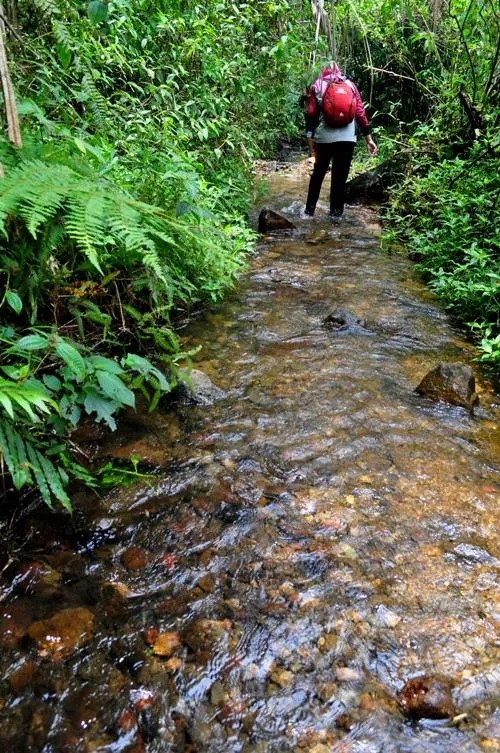 We arrived at the water level at ankle level, some places even almost half knee. I can not help the end of my pants wet. The water is so clear and feels once cold in the legs, maybe if over time can make leg cramps. Quite a distance too, probably almost 100 m. Soon we arrived in a stream of water with clear water. This is the last river whose water can be drunk directly. Seeing her eyes feel fresh and want to soak for long. This river that flows down and then branching into Curug Cigamea and Curug Ngumpet. It seems pingin linger sitting on the stones while soaking feet. But this intention must be undo because it still has to continue the journey to the crater of the Queen who was not far away.
We arrived at the water level at ankle level, some places even almost half knee. I can not help the end of my pants wet. The water is so clear and feels once cold in the legs, maybe if over time can make leg cramps. Quite a distance too, probably almost 100 m. Soon we arrived in a stream of water with clear water. This is the last river whose water can be drunk directly. Seeing her eyes feel fresh and want to soak for long. This river that flows down and then branching into Curug Cigamea and Curug Ngumpet. It seems pingin linger sitting on the stones while soaking feet. But this intention must be undo because it still has to continue the journey to the crater of the Queen who was not far away.

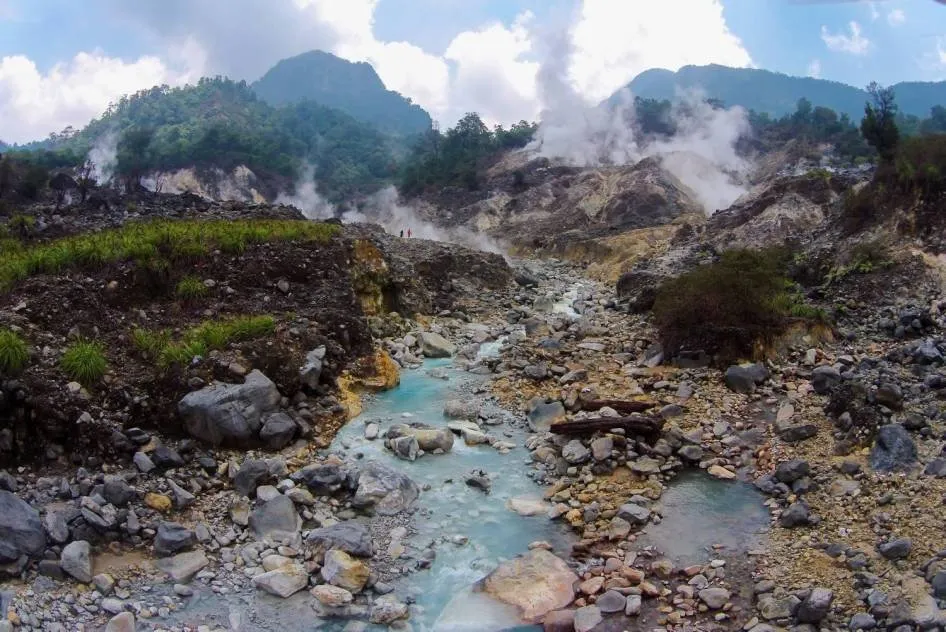
Before reaching the crater of the Queen, we will pass two craters namely dead crater I and dead crater II. Somehow called dead, maybe because it is no longer active. The smell of sulfur feels stinging when it arrives at the crater dies I. There is a small river whose color is somewhat whitish due to the influence of sulfur. The atmosphere here is so different from the previous path. Feels silent, gripping and of course mystical. Many remnants of dried branches and dead trees there, but there are still many trees that are still living around it.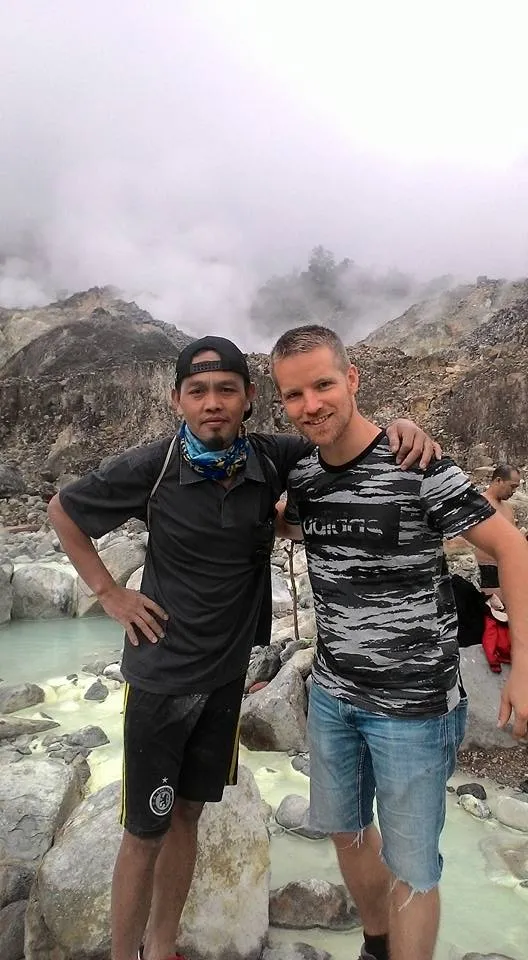
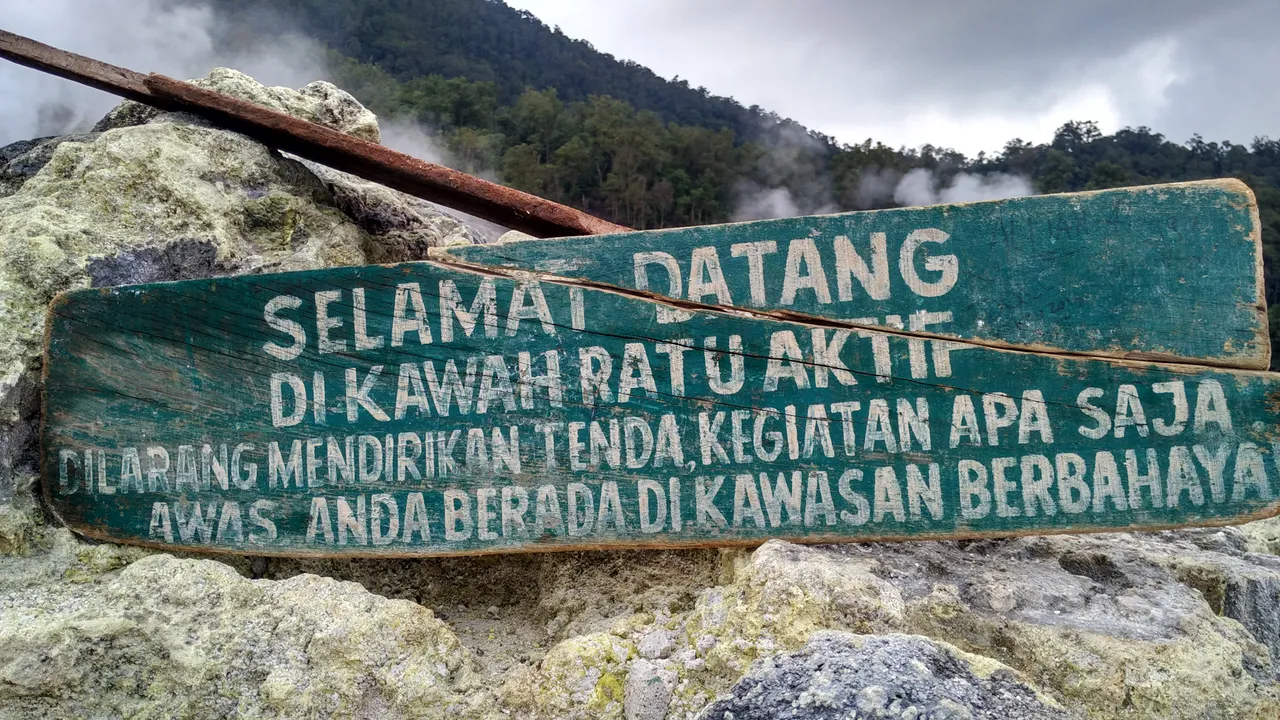
After passing through the dead crater I, we have to pass a steep rather uphill path filled with tree roots. After that on the right side looks a lake, called a dead lake. Landscape like a dead forest decorated with sulfur flow of yellow and large stones emblazoned in plain sight. Many beautiful ornaments on the ground and wood carvings are naturally formed. There is an exotic beauty as well as a chaotic atmosphere gripped there. Just look at the pictures. What a great creation Allah SWT. But do not linger here. Not far from this place was a faulty signboards with almost faded writing. Maybe this is how it sounds: "Do not squat for more than 3 minutes. The poisonous gas from the crater (CO, CO2, H2S, H2SO4), settles, is concentrated in the soil surface. Status crater = active normal ". Whether the warning is still valid or not, obviously we rush to leave this place to the crater of the Queen.
We had to descend the white-colored path. On the right side there are still many plants such as ferns and moss, and other tall plants. Only a few minutes walk we can see the white smoke. This is apparently called Kawah Ratu. Unlike Ijen Crater and Tangkuban Perahu Crater that form a wide caldera or basin at the top of the mountain. The Queen's crater is not very wide, its shape may resemble smoky limestone hills at many points. In the center there is a kind of basin that forms a small pool of liquid and emits smoke that blows in the direction of the wind.
Perhaps because it is currently a lot of rain, the smoke so popping up everywhere due to pressure from below and caused a loud roar. That's why climbing to the crater of the queen usually closed during the rainy season. It is advisable not to pass through the crater safe point because CO2 gas is coming out although it is odorless but very deadly. So be around here should not be more than 20 minutes.
According to the guide, in the crater of the Queen there is a spring that will go down as a thousand waterfall, but can not be drunk directly. The location is a bit far from where we stand, so I can not see it directly. Curg one thousand itself is the largest waterfall in Mount Salak and is located highest among the others.
There we also met another group of climbers. They apparently want to cross into the path Cidahu past the edge of the crater. Somewhat spooky also because the direction of smoke sometimes move and can just appear on the ground that we stand. The view of the Queen Crater is indeed impressed arid, with mystical and mysterious aura. Although there are still many pioneer plants such as green moss like a carpet that is able to grow in the surrounding rocks.